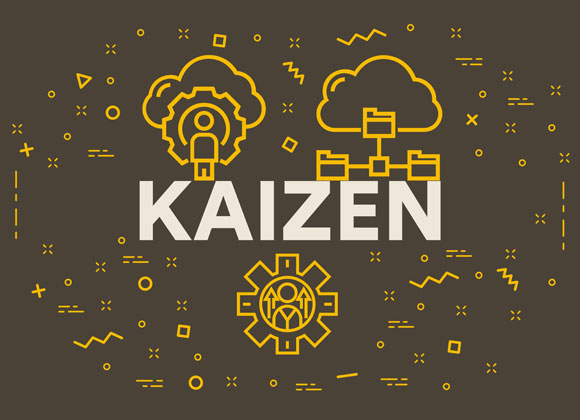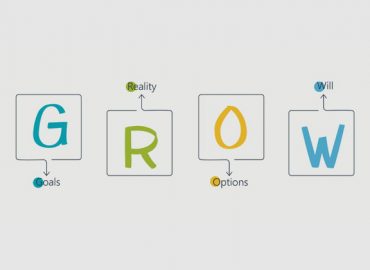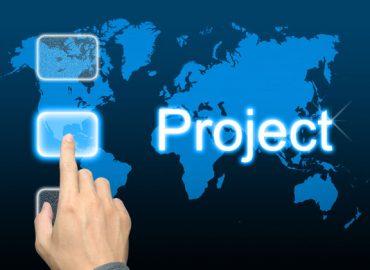What is a Kaizen Blitz?
Kaizen definition has been Americanised to mean “Continual Improvement.” A closer definition of the Japanese meaning of Kaizen is “to take apart and put back together in a better way.”
According to Webster – blitz is short for blitzkrieg. And blitzkrieg is “Any sudden overpowering attack.” Therefore, a Kaizen Blitz could be defined as a sudden overpowering effort to take something apart and put it back together in a better way.
A Kaizen Blitz is a rapid improvement workshop designed to produce results/approaches to discrete process issues within a few days. It is a way for teams to carry out structured, but creative problem solving and process improvement, in a workshop environment, over a short timescale.
The Kaizen Blitz (or Kaizen Event) is a focused, short-term project to improve a process. It includes training followed by an analysis, design, and, often, re-arrangement of a product line or area. The usual Kaizen Event takes 2-10 days.
Benefits of Kaizen
- Common sense: A Kaizen Blitz means taking the time to do the things that should be done.
- Quick: A Kaizen Blitz takes one or two days, followed by continual improvement efforts. Results are seen within a week or two.
- Practical rather than theoretical: This is not an academic exercise – it’s a practical way to quickly make significant improvements.
- Cost benefits are quickly realised. As the process becomes more efficient, cost benefits are quickly apparent.
Kaizen Blitz Principles
The kaizen process is based on several rules that may vary in detail from company to company. But the underlying concepts are the same:
- Be open-minded.
- Maintain a positive attitude.
- Reject excuses, seek solutions.
- Ask Why? Why? Why? Why? Why? There are no stupid questions.
- Take action. Implement ideas immediately, don’t seek perfection.
- That is, do what can be done now, with the resources at hand
- Use all of the team’s knowledge. The experts are frequently found on the factory floor.
- Disregard rank. All team members are equal and everyone has something to contribute.
- Just do it!!
Dangers in the Blitz
- The training, for a Blitz, is necessarily superficial. There is insufficient time for deep learning of principles, trade-offs, and design methodology.
- The Blitz does not allow time to develop important corollary elements of Lean Manufacturing. Total Quality Management, for example, takes time to introduce and produce results. Teams take months or years to properly develop. These are often forgotten in the afterglow of an event.
- The overall process may suffer. These events focus on localized areas, and As Goldratt said, “A system of local optimums is not an optimum system.” It can result in islands of productivity within a factory that, overall, is a mess.
- A Kaizen Blitz is not a substitute for Manufacturing Strategy. Like the infamous 1941 Blitz at Pearl Harbor, a successful tactic can lead to ultimate disaster without a sound underlying strategy.
Kaizen Blitz Implementation
The three stages of a Kaizen Blitz
- Preparation
- The Blitz Event
- Follow-up
Preparation:
- Identify a senior management sponsor
- Define the improvements required and scope of the problem/process to be addressed, including:
- Set SMART objectives
- Identify any constraints
- Gather available data and process information that will need to be available during the Blitz
- Select and brief the Blitz team
- Brief any other key stakeholders
The Blitz Event (5-day example):
- Introduction by Sponsor
- Introductory Blitz and process training
- Review and refinement of Blitz Project Definition (& high-level map)
- Process Map and Walk-through
- Identification of current problems (vs. the objectives)
- Initial data collection
- Continue data collection (engage with customers and other relevant stakeholders)
- Analyse data
- Develop initial views on workable solutions
- Refine and prioritise solutions for implementation
- Begin implementation of solutions
- Prepare a summary of analysis and solutions\\
- Prepare a plan for the continuation of implementation and communications
- Present outcomes and recommendations to Sponsor (& other key stakeholders)
Follow-up:
- Continue with implementation actions for items not done during the Blitz
- Communicate process changes to stakeholders
- Coach managers/staff and complete “hand-over” to business as usual
- Measure impacts and benefits
- Sign-off achievements with Sponsor
How CBIS can help you
Please contact us if you need more details on how our expert team can assists you in training and developing a Kaizen Blitz system in your organisation.
What is DFSS? Design for Six Sigma is used to perfect products and processes before...
What is coaching? Coaching is a cyclical process of elevating the other persons’ awareness of...
Lean Six Sigma is a powerful method for improving existing products, processes and services. One...
As global competition continues to grow, the pressure to improve becomes more and more intense....
Lean Six Sigma projects can lead to a rewarding experience and immense benefits for an...
Attending our Public classroom physically or joining the team virtually from anywhere, according to the training calendar.
A flexible self-paced training for busy people along with our support by a dedicated coach, to solve the disadvantage of one-way online training
Delivering flexible and tailored training for your team and at your premises as a cost-effective solution for your team.







